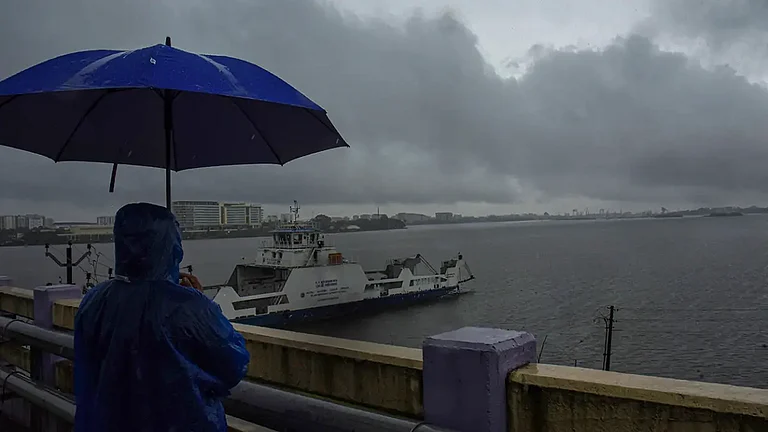
Powerful nor'easter brings 50-61 mph winds, 1-5 inches of rain, and major coastal flooding from the Carolinas to New England through Monday.
States of emergency were declared in New Jersey and New York; water rescues were conducted in South Carolina after 10 inches of rainfall.
Over 5,500 flights delayed, major airports report 26-132 minute delays; Atlantic City may see the highest water levels since Hurricane Sandy
Storm expected to linger through Monday before moving offshore Tuesday; 21+ million people under coastal flood warnings.
Wind alerts are active from Virginia to Cape Cod with 40-60 mph gusts; saturated ground increases tree damage and power outage risks.
A powerful nor'easter is devastating the East Coast, bringing torrential rainfall, destructive winds exceeding 50 mph, and life-threatening coastal flooding from the Carolinas to New England. The slow-moving storm has prompted emergency declarations in New Jersey and New York while causing widespread travel chaos and water rescues.
Storm Impact and Emergency Response
The nor'easter developed off the southeastern United States on Friday and has intensified while tracking northward. Wind gusts have reached 61 mph at Cape Lookout, North Carolina, and 59 mph at Sea Isle City, New Jersey. Acting New Jersey Governor Tahesha Way declared a statewide emergency affecting all 21 counties, followed by New York Governor Kathy Hochul's emergency declaration citing extreme coastal flooding threats.
Water rescues have begun in Georgetown, South Carolina, where emergency services saved several drivers after nearly 10 inches of rainfall created dangerous flood conditions within 24 hours. Fortunately, no injuries were reported during these operations.
Travel Disruptions and Coastal Flooding
The storm has severely disrupted air travel, with over 5,500 flights delayed across the United States. Major airports, including JFK, LaGuardia, Newark, and Logan International, report delays ranging from 26 minutes to over two hours.
Coastal flooding poses the greatest threat, with over 21 million people under flood watches or warnings. Atlantic City, New Jersey, reached minor flood stage on Sunday, forcing the closure of Route 40. Water levels could surpass 8 feet on Monday, marking the highest since Superstorm Sandy in 2012. Cape May may experience its third-highest water levels on record.
Rainfall and Wind Forecast
The system is producing 1 to 3 inches of rainfall generally, with coastal areas receiving up to 5 inches. Boston faces particularly severe conditions with 3 to 5 inches expected. Wind alerts stretch from Virginia to Cape Cod through Monday, with gusts reaching 40 to 50 mph inland and up to 60 mph along coastlines.
Recovery Timeline
The nor'easter will linger through Monday before moving eastward Monday night. Conditions should improve significantly on Tuesday as the storm heads out to sea, though lingering showers may persist in New England. The combination of saturated ground and strong winds increases the risks of tree damage and power outages across the region.
This mid-October nor'easter represents an unusually intense storm for the season, demonstrating the increasing strength of coastal weather systems affecting millions of residents along America's eastern seaboard.





























